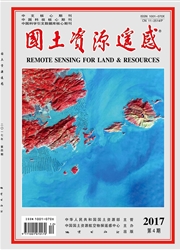

 中文摘要:
中文摘要:
为进一步推进HJ-1B星IRS4热红外数据在大亚湾核电站温排水动态监测中的应用,基于常用的海表温度反演算法,利用数值微分手段,从理论上对影响温度反演误差的大气总水汽含量、卫星观测角度以及地物比辐射率等参数进行敏感性分析;以单窗算法为温度反演模型的基础,利用2011年12月18日和22日大亚湾核电站地区的HJ-1B星IRS4数据以及与卫星过境时段对应的CE312实测红外辐射温度和气象观测数据,通过最小二乘线性回归方法,对反演模型参数进行修正,得出单窗算法修正值a=1163.4,b=-4.0134。最后,基于反演模型,利用2010和2011年HJ-1B星IRS4单通道数据开展了大亚湾核电站温排水研究。
 英文摘要:
英文摘要:
High spatial and temporal resolution of HJ - 1B IRS4 single channel infrared data can meet the need of the sea water temperature in Daya Bay where strong variability of the temperature is obvious in time and space. Based on the common HJ - 1B IRS4 sea surface temperature retrieval algorithms and numerical differential methods, the authors carried out sensitivity analysis of the influence of the temperature retrieval error, which included the total water content in the atmosphere, the observation angle and the emissivity. Combined with the actual situation of Daya Bay nuclear power plants and based on the single window algorithm for temperature retrieval model, the authors employed the H] - 1B IRS4 thermal infrared data of December 18, 2011 and December 22, 2011 around Daya Bay, the corresponding CE312 real measured infrared radiation temperature data and meteorological observation data and, through the least square method and the linear regression method, revised parameters a and b of the retrieval model, with the corresponding amendatory value being 1 163.4 and -4. 013 4 respectively. Two years' HJ -1B IRS4 single channel infrared data of 2010 and 2011 were utilized to monitor thermal discharge in Daya Bay nuclear power plants. The results provide a basis for further dynamic monitoring application of thermal discharge in Daya Bay nuclear power plants by using HJ - 1B IRS4 thermal infrared data.
 同期刊论文项目
同期刊论文项目
 同项目期刊论文
同项目期刊论文
 期刊信息
期刊信息
